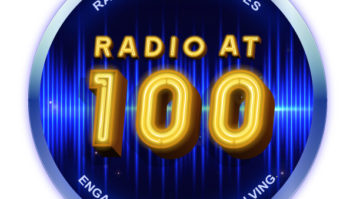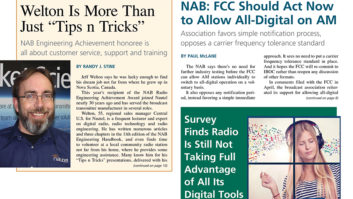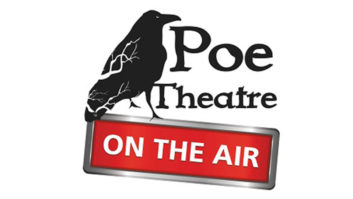 Later this year we celebrate the 100th anniversary of radio broadcasting as we know it, which came into being with the transmission of U.S. presidential election returns in the fall of 1920 by station KDKA.
Later this year we celebrate the 100th anniversary of radio broadcasting as we know it, which came into being with the transmission of U.S. presidential election returns in the fall of 1920 by station KDKA.
There are a number of documented attempts at broadcasting to the general public prior to this date; none of these other pioneering operations really caught on and captivated much attention, save for the amateur radio audience, which likely viewed them as just an experimental curiosity having some entertainment value.
Obviously, the KDKA project didn’t just happen. Its progenitor Frank Conrad didn’t stop by the stockroom of his employer Westinghouse Electric and requisition a pile of parts that, on a whim, he turned into a radiotelephone transmitter.
[Read: When Brute Force Transmitters Ruled the Air]
A lot more had to happen prior, and that is what this article is all about. It will also serve as a reference to articles you’ve been reading by John Schneider that are part of this “Radio at 100” series and are focusing on specific topics in more depth.
Roots of Radio
Most historians credit Guglielmo Giovanni Maria Marconi — inspired by reading about Heinrich Hertz and his work in demonstrating the existence of electromagnetic radiation — with having “invented” radio around 1895.
Truth be known, young Signor Marconi, barely 21, didn’t really invent anything new. He combined the inventions of several others (spark coil, detector, batteries, etc.) to create a wireless signaling system.
 As he was the first to do this and promote his accomplishment (through his English mother’s connections), he got credit — and a share in the 1909 Nobel prize in physics — for putting together this rudimentary communications system. Later, claims to priority were made by or on behalf of others including Tesla, Popov, Lodge and Bose. But they were less well-connected and without the support and machinations of a doting mother.
As he was the first to do this and promote his accomplishment (through his English mother’s connections), he got credit — and a share in the 1909 Nobel prize in physics — for putting together this rudimentary communications system. Later, claims to priority were made by or on behalf of others including Tesla, Popov, Lodge and Bose. But they were less well-connected and without the support and machinations of a doting mother.
None of these individuals invented broadcasting. Their concerns centered around investigations of electromagnetic radiation, detecting lightning discharges, remotely igniting gunpowder, wireless transmission of electrical power, or in the case of Marconi creating a means of wireless signaling and communication.
Broadcasting of speech and music to the masses wirelessly would be the provenance of others and would have to wait a decade or so.
False Starts
Most notable of these was Reginald Aubrey Fessenden who, early in the 20th century, was driven by an obsession of sorts to move radio away from the endless streams of “dits and dahs” being spewed out by gigantic high-voltage spark coils — really artificial lightning machines — and used more or less exclusively for communication between ships and corresponding land-based stations. (By that time, there was also a sizable community of amateurs of all ages who were interested in provoking the “luminiferous Ether” through which these “Hertzian waves” were thought to travel.)
Fessenden was the first to realize the requirement for a smoothly changing (sinusoidal) carrier wave upon which to impress speech and music, and also the potential for wirelessly transmitting such intelligence to the masses untrained in the art of copying Morse Code.
He succeeded well enough in his efforts in late 1906 to demonstrate “radiotelephony” to a handful of witnesses, including a couple of Associated Press reporters, late in the afternoon of Friday, Dec. 21, that year. (Fessenden would much later in his life claim to have put together a real “broadcast” a couple of days later to entertain shipboard and land station wireless operators, but this wonderful Christmas Eve event has never been substantiated.)
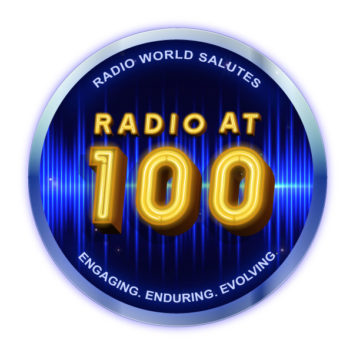 While Fessenden certainly had the dream — even providing a typed “handout” about the potential to transmit news and entertainment to large numbers of “listeners-in” to attendees at his Dec. 21 demonstration — he lacked the drive to follow through on this initiative, leaving it to others.
While Fessenden certainly had the dream — even providing a typed “handout” about the potential to transmit news and entertainment to large numbers of “listeners-in” to attendees at his Dec. 21 demonstration — he lacked the drive to follow through on this initiative, leaving it to others.
One of these, Lee de Forest — who invented the first really useful electronic amplifying device and would later assume the title of “father of radio” — did follow through a few days after Fessenden’s demo by putting speech and music on the air in and around New York City in late December 1906, and carrying this work on into 1907 and beyond. De Forest even broadcast music created by a primitive keyboard synthesizer, the Telharmonium, and live performances from the stage of the New York Metropolitan Opera House.
In San Jose, Calif., and a bit later out of the gate, Charles “Doc” Herrold was smitten by the concept of providing entertainment wirelessly to the masses, first experimenting around 1909 with a system of wireless telephony similar to that used by de Forest and starting up a regular broadcasting initiative in 1912.
However, in both cases (and on both coasts), outside of the amateur radio community and a few members of the professional ship-to-shore users of radio, there wasn’t really much of a listening audience, and apparently neither de Forest nor Herrold was sufficiently interested in promoting their broadcasting efforts to achieve “buy-in” from the general public.
They preferred instead to focus on the creation of radio-related inventions and patents and, in the case of Herrold, operating a school to train prospective “radiomen” in the fundamentals of the art.
Truth be told, due to the rather poor audio fidelity that was achievable via the transmission and modulation technology used by de Forest and Herrold — they both employed transmitters driven by a hissing electric arc — it is doubtful that even with a lot of money spent on promotion, the masses would have been attracted much beyond the initial novelty of the thing.
Inventing the Technology
So, assuming that Westinghouse’s Dr. Frank Conrad did possess the requisite technical savvy and imagination to envision and bring into being radio broadcasting, it’s obvious that several things had to happen to move from the high-frequency alternator of Fessenden and the “arcphone” technology employed by de Forest and Herrold.
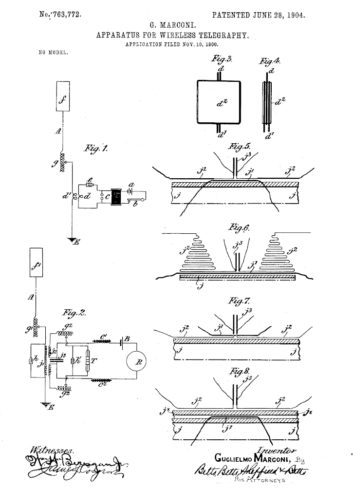
There was no quantum leap here. A number of principles had to be established, discoveries made and inventions perfected before a satisfactory means for transmitting speech and music burst upon the global scene in the early 1920s.
Foremost was the setting down of the fundamental equations and relationships governing all electromagnetic radiation by James Clerk Maxwell, and the experimentation and proof positive of the existence of this invisible energy a few years later by Hertz.
Both of these milestone events were necessary for radio of any sort to move forward; however, in themselves, they did not lead directly to a system for broadcasting.
One of the seminal inventions, or principles, was that of resonant, or tuned, circuits. For this, the Marconi company has to be given some amount of credit, as a rather famous British patent (No. 7,777 and referred to as “the four sevens”) was awarded to that firm in 1901.
This patent (“Improvements in Apparatus for Wireless Telegraphy”) and its U.S. counterpart no. 763,772, issued in 1904, describe the use of tuned circuitry and the transmitter and receiver to allow them to “syntonize” or operate on the same frequency.
This invention was driven by the need to reduce interference between spark radiotelegraph stations, which, prior to the introduction of such technology, radiated very broad signals (spread-spectrum?) with tuning set only by whatever stray capacitance to ground and antenna/transmission line inductance existed at a particular installation.
(Interestingly, Oliver Lodge, who had been employed by Marconi and experimented along these lines, challenged Marconi’s priority in making such a discovery. Also, the U.S. version of the patent was declared invalid in 1943, with credit being given to Tesla for prior art.)
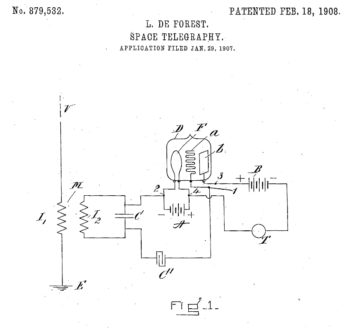
Regardless of who invented tuned circuity achieved through use of discrete components, it was a fundamental step on the path to broadcasting.
Another key component was something that Marconi and his company couldn’t provide: a means for generation of a continuous high-frequency oscillation to serve as a “carrier wave” for transmission of speech and music. (Marconi’s spark-driven wireless telegraphy operated in bursts of electromagnetic energy, referred to as a “damped wave” or an oscillation that trailed off in intensity over time.)
Fessenden appears to have been first to recognize the unsuitability of damped waves for transmission of speech and music, initially working to perfect a spark transmitter with an extremely fast “make-and-break” interval so as to try and ameliorate this shortcoming. He did build a working model and demonstrated it in late 1900, transmitting a raspy, but intelligible, representation of human speech for a distance of about a mile.
Fessenden quickly realized that spark was a dead-end technology for his application and experimented for a while with Poulsen’s arc-driven oscillator before moving on the concept of using a high-frequency AC generator (alternator) to create a continuous wave without the “sizzle” associated with arc.
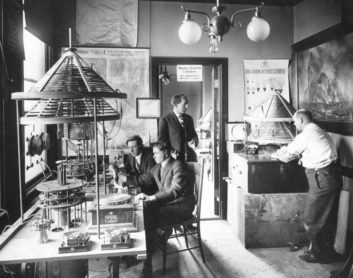
After several years, and a lot of pressure exerted on the General Electric Co. to develop a high-frequency alternator, he did publicly demonstrate successful transmission of speech and recorded music on the afternoon of Dec. 21, 1906.
However, there is a limit as to how fast an alternator’s armature can spin without flying apart. This limited operation of such mechanical sources of RF to very long wavelengths that aren’t really practical for general broadcasting purposes (VLF and LF portions of the spectrum).
Audio modulation is also very difficult to achieve with such rotating machine technology. (Fessenden simply inserted a specially designed carbon microphone in series with the transmission line feeding the antenna. The mic’s resistance varied with the audio reaching it, and this in turn varied the transmission line current, achieving amplitude modulation of a sort. He admitted at his Dec. 21 demo that this scheme provided a modulation depth of no more than about 5%.)
Despite this rather large advance in technology, practical broadcasting had hit another dead end of sorts, awaiting a more practical means for generation of a continuous wave.
This came almost by accident in late 1906, about the time that Fessenden was performing his public demo of speech and music, when de Forest hit upon the idea of an electronic amplifying device when trying to develop a detector that didn’t infringe on previous inventions. It was not long before de Forest and others discovered that his crude three-element vacuum tube could also function as an oscillator. This device, after a lot of refinement by licensees GE and AT&T, supplied another key ingredient essential for the birth of broadcasting.
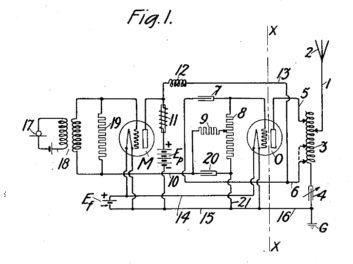
Aside from a practical radio detector — which now existed in several forms (electrolytic, crystal and vacuum tube) — the only other missing ingredient was a reasonably efficient methodology for modulating audio onto a carrier wave. This was supplied by a Western Electric engineer, Raymond A Heising, in the form of his “constant current modulation technique.”
While not perfect in terms of efficiency or modulation depth, it did provide a relatively simple way to impress audio intelligence onto a carrier, and was a quantum leap from the methodology employed by Fessenden and others in broadcasting’s “pre-history.”
While these elements — tuned circuitry, a practical source of continuous waves and an audio modulating scheme with reasonable efficiency — which were all available by the mid- or late-1910s, the world would still have to wait a little longer for the birth of broadcasting.
A major complicating factor had arisen: The Great War (1914–1918). With America’s entry into the fighting in the spring of 1917, much of the work on radio research and development was halted, and an executive order in April from Pres. Woodrow Wilson led to the dismantling of private transmitting and receiving equipment.
Radio went to war for the first time, and research in this area was basically limited to the production of practical apparatus for use in battlefield communication.
Broadcasting would have to wait a little longer.
NEXT: Radio broadcasting takes to the air.






